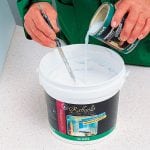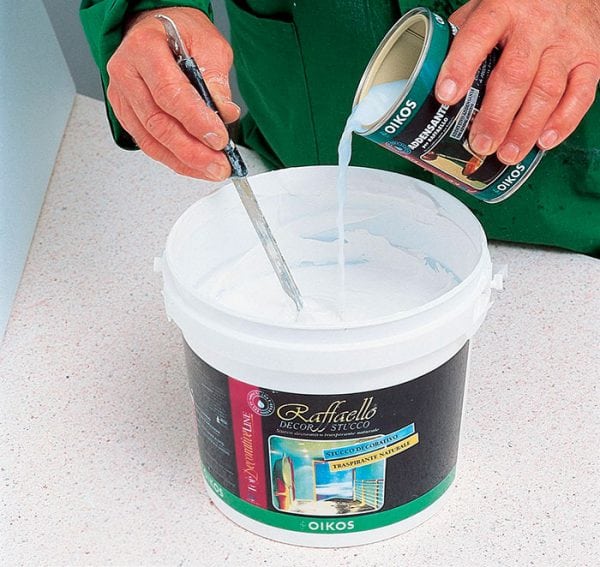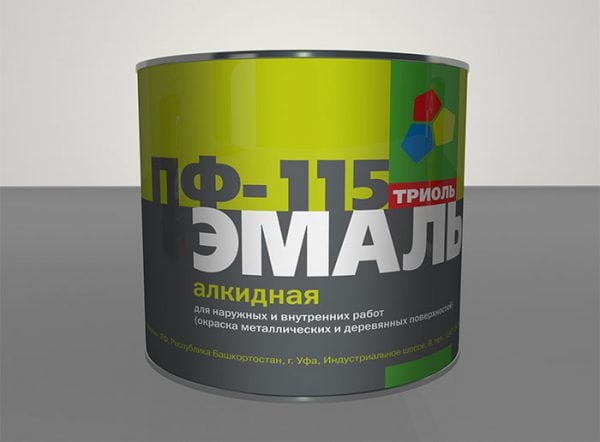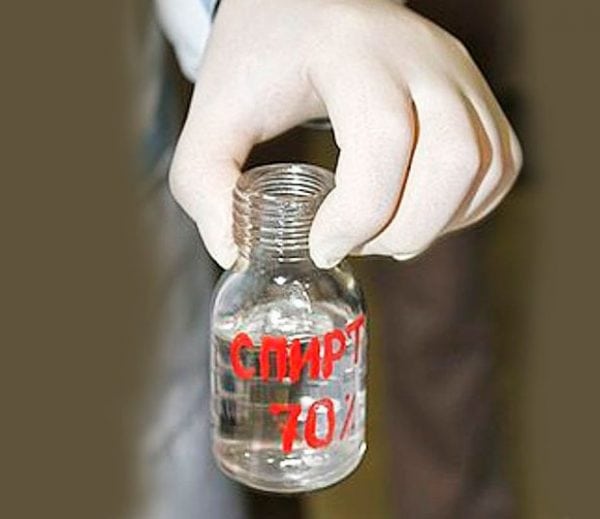Almost all types of coloring matter must be diluted before use by mixing with a particular solvent, which facilitates the application process and increases the level of protection of the coating from rust. The proportions of dilution depend on many factors.
- Types of coloring materials
- Acrylic enamel
- Alkyd enamel
- Nitro enamels
- Water-based paint
- Filler
- Additional recommendations


First of all, it is necessary to determine the degree of fullness of the paint. This indicator indicates the concentration of the coloring matter (the amount of solvent already present). The higher the degree of fullness, the more you can dilute. It should be noted that the process of painting with highly filled paint is much simpler, material consumption is reduced, it lays down better, especially when it comes to painting on metal and protecting it from rust. This indicator is ranked by the following notation (from less diluted to the most filled):
- LS;
- HD;
- HS;
- MS;
- UHS;
- VHS.
Types of coloring materials
This is the main factor on which paint thinner you can use.
Acrylic enamel
Consists of several components. Before painting, it is mixed with a hardener and diluted with diluent to the desired consistency. Suitable solvents for its dilution:
- P-12;
- 650 (soft enough, therefore suitable for many coloring agents);
- 651.
The content of diluent should not exceed 10-15% of the volume. The exact consumption must be clarified when buying from a specialist.
Alkyd enamel
Universal material, it is used not only for painting surfaces of various materials, but also used as a primer against rust.
- toluene;
- xylene;
- P4;
- white spirit (it is better to use artistic white spirit, since the usual may contain impurities that precipitate).

It should be noted that there are types of alkyd enamels that do not require dilution, for example - PF-15 and Extra. As an alkyd alternative, phthalic oil enamel may be used. In properties, it is similar to PF-115, but it does not have a pungent odor. This species has excellent flow rate, bright colors and resistance to chemical and atmospheric influences.
to contents ↑Nitro enamels
Any type of solvent is suitable for this type of paint, but it is better to use recommended by the manufacturer. When breeding nitro enamels, you can use the 646th (it is also suitable for soil), however, it should be noted that this is a very aggressive type of diluent and you need to use it carefully.
Water-based paint
Aqueous emulsion can be diluted with wateralcohol or ether. It is important to remember that the water must be distilled, since in ordinary water, even in fresh water, there are a large amount of salt impurities, which can cause a white coating when the coating dries.Alcohol may not be compatible with the coloring matter, so it is necessary to check on a small amount before diluting the entire volume, if the tested paint does not curdle after dilution with alcohol, then the substances are compatible and this diluent can be used.

Filler
The filler is the soil, the preparatory material is no less important to properly dilute than the coating, which is expected after it. The main objective of the soil is to smooth surface microroughnesses before painting, which is not only necessary when painting, but also protects against rust in the future.
If the soil film is too thin, then it will not be able to cover all defects and depressions and will have to be applied a second layer, which leads to an additional expense. If the soil is too thick, its penetrating and rust-proofing ability will decrease, and again it will not be able to fill in the bumps on the surface. The material will begin to exfoliate and will not be able to spread, resulting in shagreen, which will have to be removed by grinding.
Solvents that can be used for soil:
- solvent;
- xylene;
- a mixture of solvent or xylene with white spirit.
It should be noted that 20% diluent is added to single-component soils, and two-component soils are diluted in the proportions specified by the manufacturer (2 kg to 1 kg, 3 kg to 1 kg, etc.).
to contents ↑Additional recommendations
When diluting paints and varnishes, it is necessary to add a thinner in small portions so as not to be mistaken with the proportions. This will reduce the consumption of both the product itself and the main material.
An insufficient amount of diluting material increases the paint consumption (kg. Per sq.m) and makes the coating uneven. Excess leads to smudges and stains, it is necessary to apply enamel repeatedly, which also increases its consumption.
To further resist rust and protect the painted surface, powdered metals can be added to the solution.
The proportion of the added metal in powder to the paint thinner per 1 kg is determined individually, depending on the manufacturer's recommendations.
When working with solvents, you must remember the safety precautions: use gloves and a mask, ventilate the room. In case of contact with the solvent or skin, rinse these areas with warm water and soap and consult a doctor.



